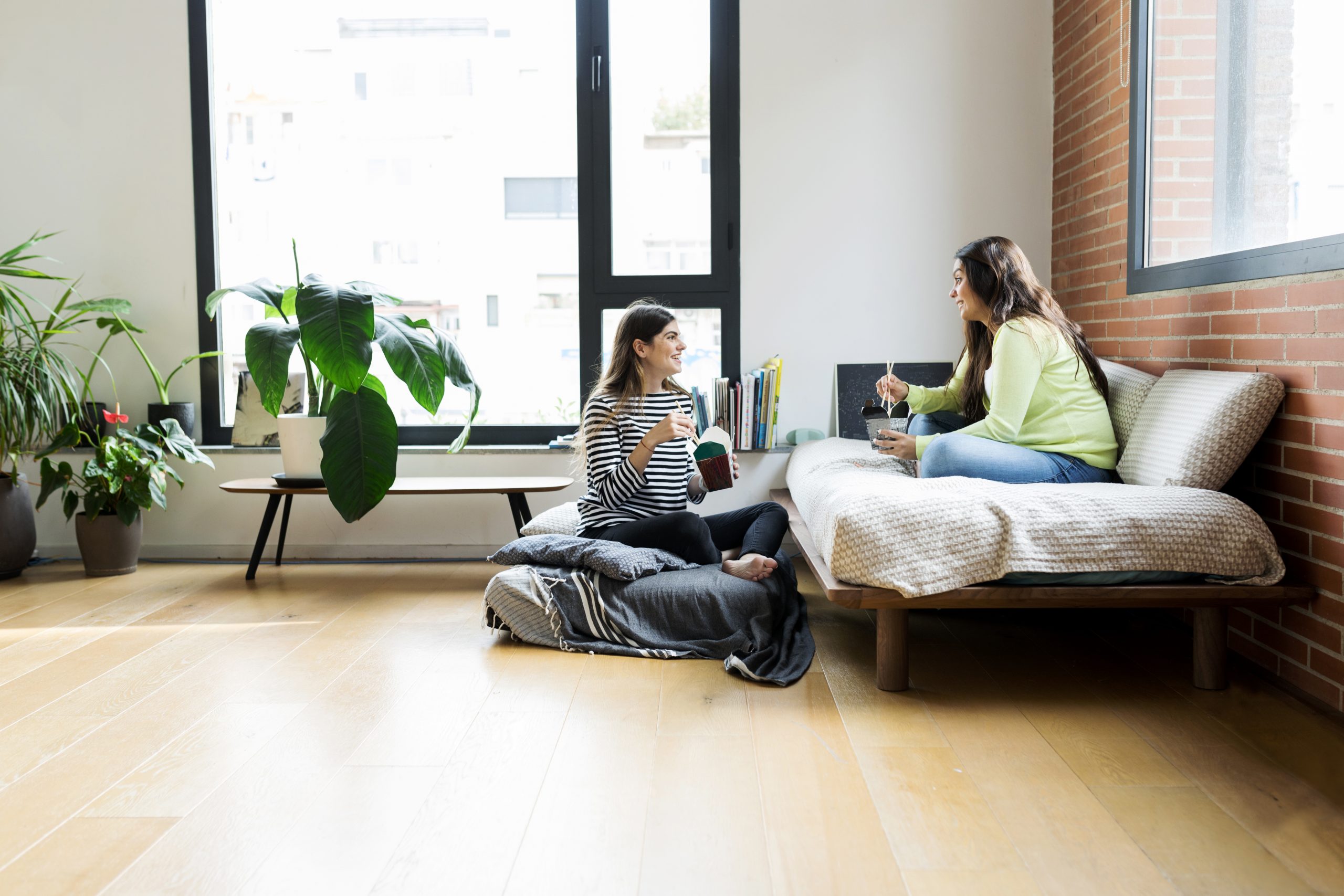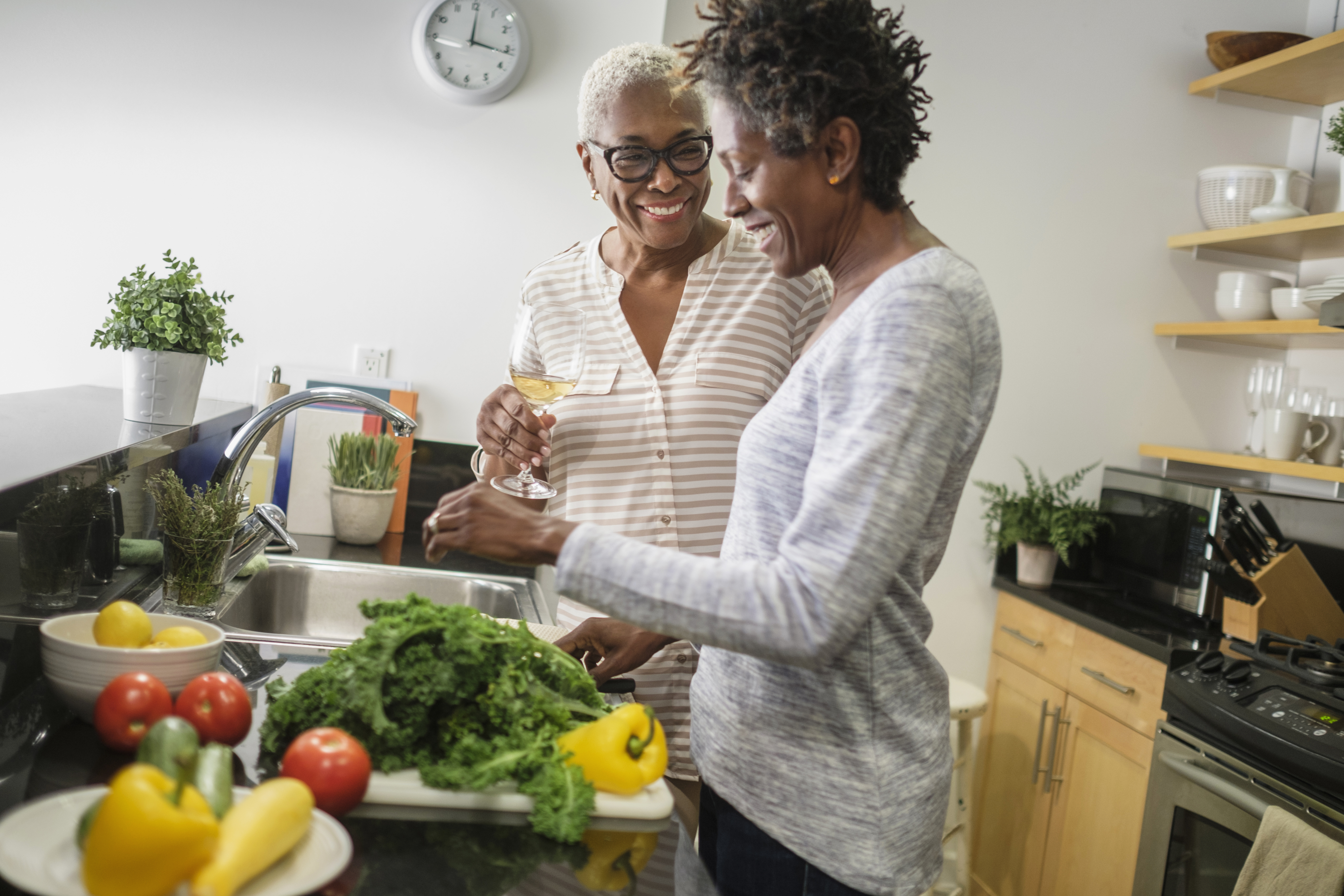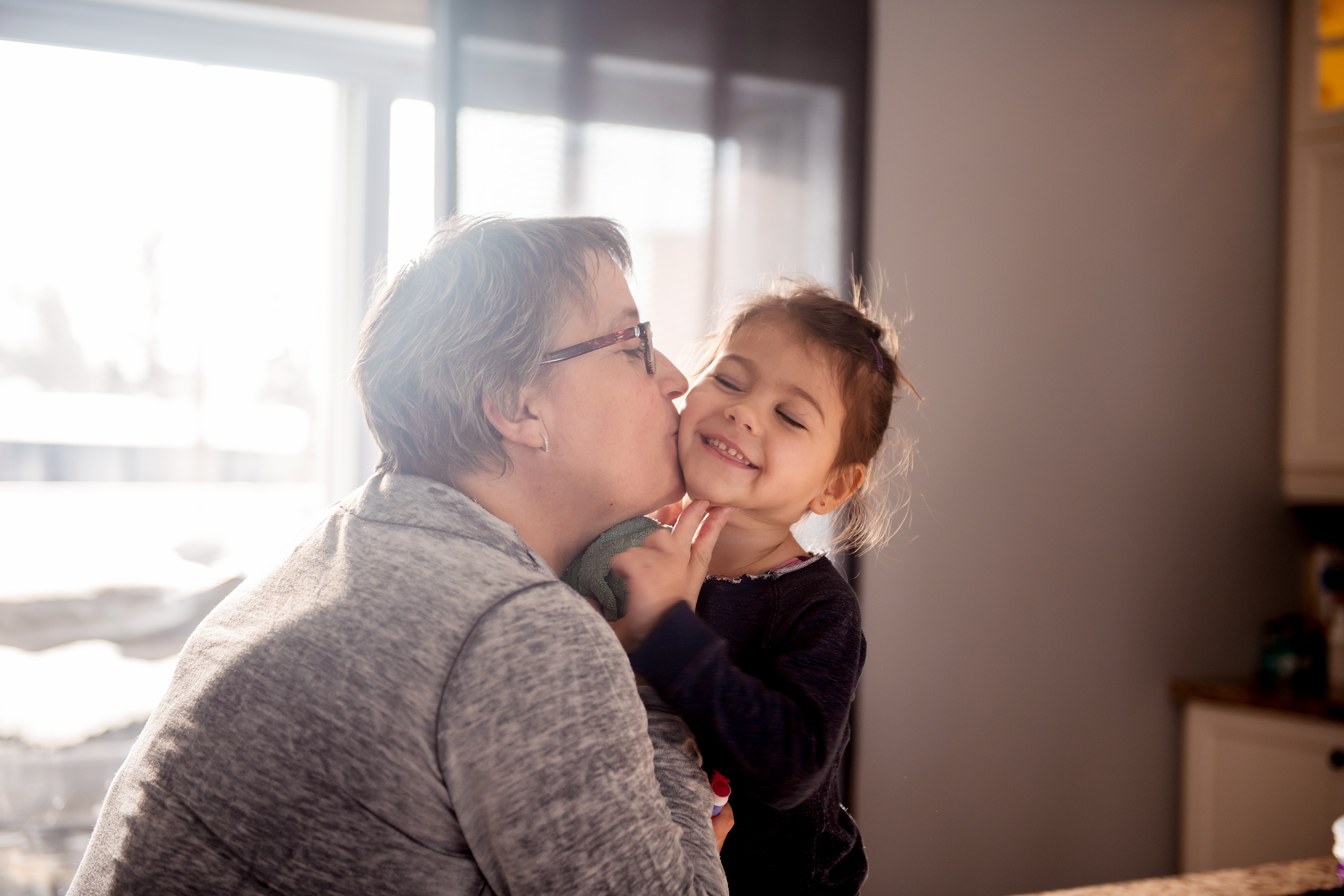Support bubbles in national lockdown: What are the rules for family and friends?

For almost a year now, support bubbles have been a lifeline for anyone facing the pandemic alone.
Support bubbles were introduced during the first lockdown, when it became clear that isolation would have a detrimental impact on anyone living alone or within a small household. They developed over time to include more people as the restrictions increased and concerns around childcare were raised, but their purpose has remained the same.
Now we're in the third lockdown, with infections at an all time high around the country, people are relying on them more than ever before as restrictions are some of the tightest they've been since March last year. Schools are closed and everyone is back working from home with only essential outings allowed and social mixing is extremely limited.
Now, even as the rules begin to lift under the government's roadmap and kids have a date for going back to school, support bubbles will remain an essential for millions of people who need them for everything from social interaction to childcare purposes.
What is a support bubble and how does it work?
A support bubble, when it was initially created as a concept, allowed single adults to join up with another household. In December last year, the criteria to create a support bubble changed to include more situations and realistic family dynamics, to allow those in need to access support from family and friends.
They work to combat loneliness as someone by themselves (or under other limited criteria) can mix with the members of their support bubble as if they were in the same household. This means that all members of the support bubble don't have to socially distance from each other, they don't have to wear a mask when less than two metres apart, and they can come and go from each other's homes as they wish. Under the latest restrictions, these bubbles do have to be a maximum of 10 people, including children, at any one time though.

While it's a fantastic way to ensure that everyone vulnerable living alone can mix with other people, equally as much as those living with other people under one roof could, what affects one member of the support bubble affects everyone. This means that if anyone in either household begins to show symptoms of coronavirus or tests positive, then all members of the bubble, including the person potentially living alone, must self-isolate for 10 days.
GoodtoKnow Newsletter
Parenting advice, hot topics, best buys and family finance tips delivered straight to your inbox.
As support bubbles move between households essentially, there is still the risk for transmission.
Who can create a support bubble?
After the changes made at the end of last year, the following people can now form a support bubble during the national lockdown and any other restrictions that come afterwards:
- If you live by yourself - even if carers visit to offer support.
- If you are the only adult in your household who does not need continuous care as a result of a disability.
- If your own household includes a child under the age of one, or who was under the age of one on December 2 2020.
- If your household includes a child with a disability who needs continuous care and is also under the age of 5, or was under the age of 5 on December 2 2020.
- If you are 16 or 17 years old and living independently with other people of the same age, without any adults present.
- If you are a single adult living with one or more children who are under 18 years old, or were under 18 years old on June 12 2020.
These are the only conditions that people in England can create a support bubble, otherwise known as an 'extended household' with different rules in Scotland and Wales.
They differ from childcare bubbles, which allow people such as grandparents to see their grandchildren and offer essential childcare only. In support bubbles, people are allowed to mix and mingle with people in their extended household as they wish.

Can you be in 2 support bubbles?
To avoid the transmission of the virus, it's essential that those already in one support bubble do not create another. You can only be in one support bubble at a time and this relates to both the larger household and the individual person (or people) who are forming the support bubble.
There are some exceptions to this, as those sharing custody of a child don't have to create an extended household with the other parent or carer's household for the child to move freely between the two. They can do this without exception.
Can you change your support bubble?
If possible, the government advises that no one changes their support bubble during the pandemic. However with the unexpected nature of this year, things happen and so it is possible to change your support bubble, as long as you follow strict social distancing measures in the transition period.
These include:
- Your household, or the one you intend to form a new support bubble with meeting at least one the eligibility rules for forming a support bubble.
- The other household is not already part of a support bubble which they intend to remain a part of while bubbling with you, as this would mean they were part of 2 support bubbles which is not allowed.
- You must treat your previous support bubble as a separate household for 10 days before forming your new one.
- If someone in your old support bubble develops symptoms or tests positive for Covid-19 in the 48 hours after members of the support bubble last met, all those in the bubble must self-isolate for 10 days. The person creating a new support bubble must not see members of the new bubble in this time and they should follow the UK self isolation rules completely.
Under the new lockdown rules, those who were asked to shield in March because they are clinically vulnerable have been asked to isolate again. However, anyone shielding is still allowed to form a support bubble if they feel it's essential for their own physical and/or mental health. But the government has warned, this is a personal choice and it should be carefully weighed up with the risk of infection.

Can a support bubble stay overnight?
Support bubbles essentially become one household, so overnight stays are allowed. You don't have to socially distance either, which is why they're available only to those living alone or under certain other conditions, as they provide essential support in these difficult times.
But it's important to note that a support bubble shouldn't be so far away that you have to stay overnight every time, as travel rules for lockdown dictate that people must stay local.
How far can you travel to your support bubble?
The government guidance for support bubbles urges people to stay in their local area, but it doesn't specify distance. Instead, the government are encouraging those who are eligible for a support bubble to pick a household that's close to them, saying, "If you form a support bubble, it is best if this is with a household who live locally. This will help prevent the virus spreading from an area where more people are infected."
It comes as all non-essential travel has been banned, including travelling abroad for any purpose other than for work and some other exceptions.
However as the lockdown begins to ease, this will change. At the moment, from March 29 all guidance to 'stay at home' will be scrapped in favour of a wider instruction to 'stay local' where possible. This means that travelling to your support bubble, within a reasonable distance, will likely be allowed.
What is the difference between a childcare bubble and support bubble?
The difference between a support bubble and childcare bubble is that the former is for emotional support and to combat loneliness for people largely living alone, and a childcare bubble is for those struggling with childcare during lockdown.

A childcare bubble can be formed between two different households of any size, as long as the following conditions are met:
- The bubble is only formed for the purposes of informal (unpaid and unregistered) childcare.
- The child must be under the age of 14.
- All adults in both households must agree to this bubble.
- You cannot use a childcare bubble to mix with another household for other reasons, such as socialising.
Those in childcare bubble are allowed to stay overnight and offer the childcare inside their home, the child's home or outside.
How do support bubbles change under the government's new plan?
The good news is that the rules around support bubbles and who can form one isn't set to change anytime soon. While the restrictions are in place, support bubbles will remain the same and continue until all measures are completely lifted - which is currently anytime from June 21. After this time, as said by the prime minister during his address on February 22, all social restrictions will be lifted so support bubbles won't be required anymore.
Before this point, however, other restrictions will lift which will allow people more social freedoms. Notably from March 8, two people from separate households will be able to meet on a bench for a drink, coffee or picnic. Then from March 29, a group of two households or up to six people will be allowed to meet outdoors in a private garden or public space. Following this, and if the four criteria for lifting lockdown are met, pubs and restaurants will be able to open their outdoor areas for groups of six from April 12. Then from May 17, groups of up to six or two households will be able to meet indoors or outdoors in any public or private space, including in pubs and restaurants.
In his announcement to the House of Commons on February 22, the prime minister said that his priority was getting children back to school and allowing people to see their loved ones again.
He commented that there was "no credible route to a Zero Covid Britain or indeed a Zero Covid World and we cannot persist indefinitely with restrictions that debilitate our economy, our physical and mental well-being, and the life-chances of our children.
"And that is why it is so crucial that this roadmap should be cautious but also irreversible."
Amy is Senior Digital Writer across Woman & Home, GoodTo and Woman, writing about everything from celebrity news to health, fashion and beauty features. When she isn't obsessing over the latest dress drop from Marks & Spencer, you'll most likely find Amy out running, or with a cup of tea in hand ready to dive into a gripping new Netflix series.